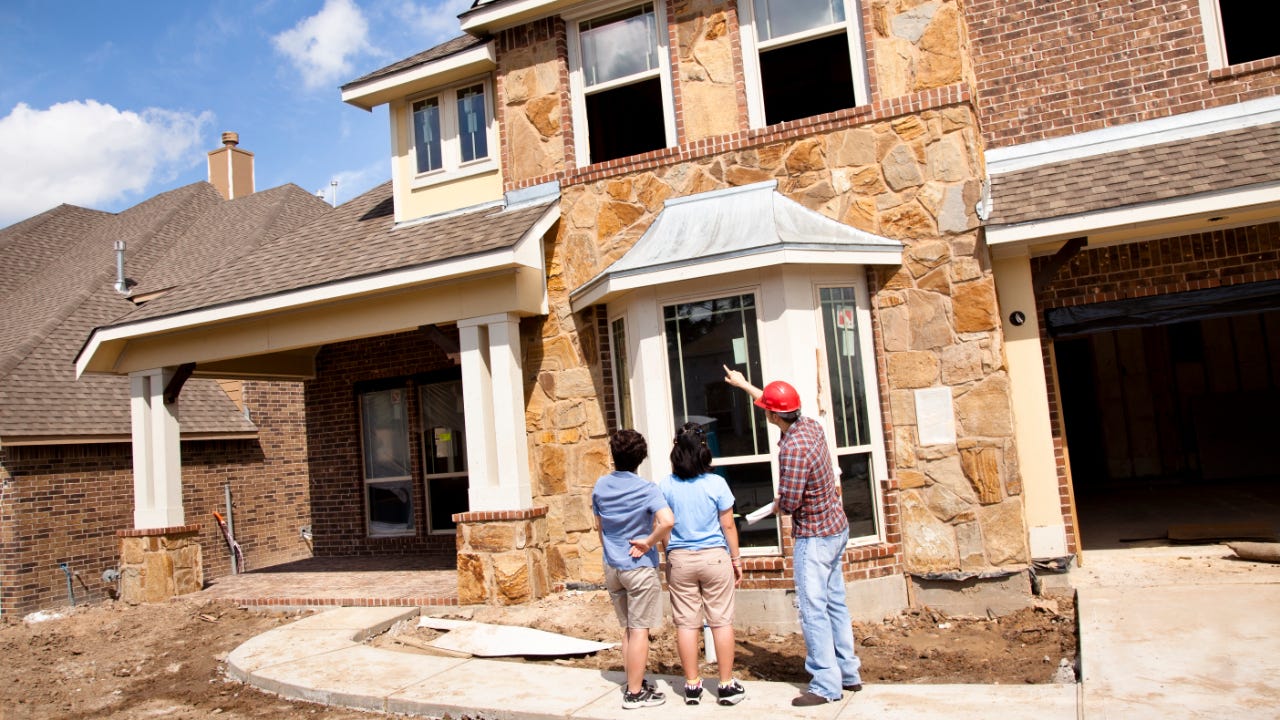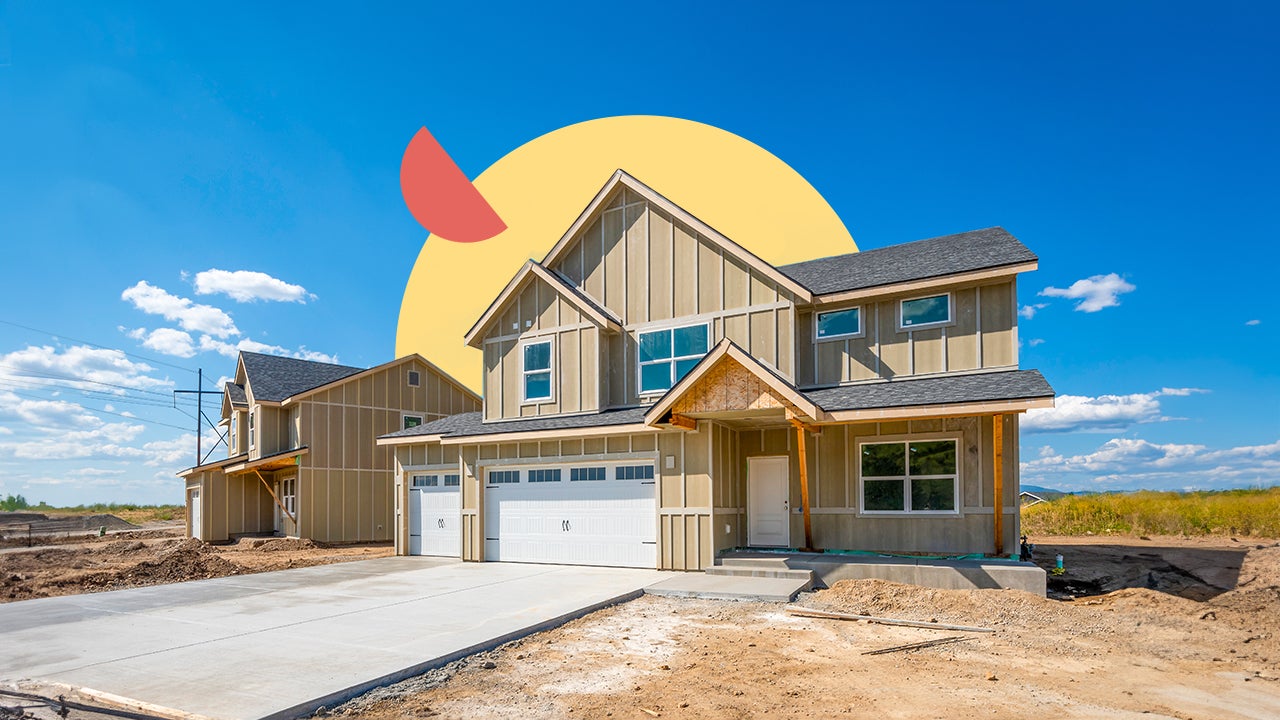How to spot common problems in new-construction houses

After years of home construction failing to keep up with demand and a shortage of inventory, homebuilders are doing their best to meet the needs of U.S. buyers. While builders are rapidly working to bring new housing to the market, that rush can sometimes result in unintended errors, or even cutting corners.
That means homebuyers need to make sure they identify any potential construction issues before moving in. The real estate market may be cooling a bit, but it is still highly competitive, and now is not the time to skip your home inspection. Just like existing homes, newly built homes can have hidden problems, too. Here are some of the most common, and how to spot them.
What are the most common home defects?
For homebuyers, it’s important to go into a property visit with eyes wide open. Little things that look out of place or appear improperly finished can hint at bigger problems below the surface.
“Look for things like little sheetrock cracks over doorways or around windows — if the house is settling a little bit or it has foundation problems, that could be an issue,” said Dan Bawden, owner and president of Legal Eagle Contractors in Houston. “Be sure that everything is working properly. It’s a good idea to check the fit and finish of a new home by opening drawers and closing them to make sure they operate smoothly.”
Some relatively easy things to check for include crown molding that appears to be separating from the wall, cracks of more than a quarter inch in garage or driveway concrete, or any patches on the wall that aren’t blended properly into the paint scheme, Bawden says.
“Sometimes in construction there will be a problem with the plumbing behind the new sheetrock,” he continues, so you want to make sure the builder has addressed whatever might be going on behind the wall.
Other things to look out for include dripping faucets, non-functioning lights and anywhere that looks like water could get in from outside.
Shortcuts homebuyers should look out for
Because of strong demand and skyrocketing prices for many building materials, including lumber, some contractors may have to make substitutions. So you’ll want to make sure that things like stone counters or hardwood floors aren’t swapped out for lower-quality options at the last minute.
One example: “Synthetic marble countertops are much cheaper, but they scratch really easily and they’re not that easy to live with,” Bawden says.
Nick Gromicko, founder of InterNACHI, the International Association of Certified Home Inspectors, agrees: “Material has gone sky-high — in the past, labor was worth more than material.” As a result, he says, if a contractor makes a mistake when cutting a piece of wood, “they’re less apt to correct the mistake by switching out the lumber or the product. They’re more likely to patch.” Patches are fine if done properly, but can be a weak point in a newly built home if they were rushed.
“Because of the housing shortage right now, there’s not much inventory, and builders are doing everything they can to speed things up. It’s hectic,” Gromicko says. And that can lead to more mistakes, which can be expensive in the long run for a new homeowner.
More signs of a poorly built house
As you’re touring new-build homes, keep an eye out for signs of shoddy construction. These can include:
- Gaps in wood flooring: Spaces between wood flooring planks can be caused by either improper installation or fluctuating moisture conditions. Whatever the cause, the gaps are hard to fix.
- Misaligned doors: When doors are improperly or hastily installed, they may not close completely. They may stick, or there may be gaps between a closed door and the doorway frame.
- Cracks in concrete: Another easy-to-spot sign, cracks in driveways and walkways may be an indication of improper installation.
- Water stains around windows: Visible water stains around the edges of windows, and even doors, can be caused by leaks — or worse, mold. These stains indicate that water is getting into areas where it shouldn’t.
- Moisture under sinks: Open the cabinets under sinks and look for water stains or dripping. This may be caused by plumbing or installation that was not completed correctly.
How to avoid new-build problems
Above all, both Gromicko and Bawden agree that the best thing any homebuyer can do is to get the home inspected before closing. A professional inspector will take time to test every fixture and outlet, and will know how to identify problems that may not be obvious when you first walk in the door.
“Psychologically, when you walk into a new house, your brain is bombarded with images and surfaces,” Bawden says. “You’re trying to process: Do I like the layout? Do I like the colors? You’re not going to notice a little sheetrock crack.” An inspector will. “Get a good home inspector who will do a full inspection,” he says.
“Brand-new homes are not like brand-new cars,” Gromicko says. “Every home is really built individually. Your inspector is going to find something wrong.”
Any problems you or your inspector find should be addressed well before closing. “You can have the builder provide assurances and a specific warranty in the purchase paperwork,” Bawden says. He also recommends getting a termite inspection, even for newly built homes, because they may sit uninhabited for a few months before a sale closes.
How to find an inspector
Your Realtor may be able to help connect you with a reputable home inspector, and you can also search for one on the InterNACHI website. It’s important to make sure your inspector is independent from your builder and has experience with new construction in your area.
Bottom line
The hot housing market and ongoing supply-chain issues may lead some builders to take shortcuts on newly built homes. If you’re considering purchasing new construction, it’s important to identify any potential issues before you get the keys, or you could be on the hook for expensive repairs down the road.
You may also like

‘We buy houses’ companies in Kansas

Pros and cons of new-construction homes




